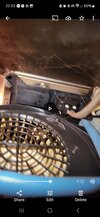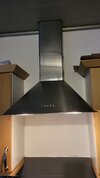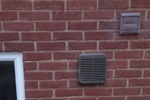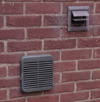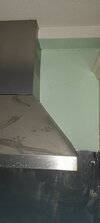- Joined
- 12 Mar 2016
- Messages
- 294
- Reaction score
- 2
- Country

Hi all
We have moved into a new property and the cooker exhaust hood has failed and only the light comes on.
So we were thinking to buy a new one.
The current one is a exhaust hood that operates on a recirculating system, meaning it filters and recirculates the air rather than venting it outside.
The Indesit H 561 IX is an exhaust hood with a height of 810 millimeters, a width of 600 millimeters, and a depth of 515 millimeters
So we wanted to get a new one that will work. So do we need to make sure that a new one will operate on a recirculating system as I think the current one didn't operate on a extraction though the chimney etc?
We can't do more on the width but can a little on the depth.
Can anyone help with some links to some on argos, wikes etc that would be a suitable replacement please?
We also need to make sure we get one that comes with the carbon filters or they can be easily bought atleast alongside it and anyother essential parts that are needed so we don't find ourselves fitting a fan and not able to operate as it doesn't come with all necessary parts.
Thanks all
We have moved into a new property and the cooker exhaust hood has failed and only the light comes on.
So we were thinking to buy a new one.
The current one is a exhaust hood that operates on a recirculating system, meaning it filters and recirculates the air rather than venting it outside.
Indesit H 561 IX
The Indesit H 561 IX is an exhaust hood with a height of 810 millimeters, a width of 600 millimeters, and a depth of 515 millimeters
So we wanted to get a new one that will work. So do we need to make sure that a new one will operate on a recirculating system as I think the current one didn't operate on a extraction though the chimney etc?
We can't do more on the width but can a little on the depth.
Can anyone help with some links to some on argos, wikes etc that would be a suitable replacement please?
We also need to make sure we get one that comes with the carbon filters or they can be easily bought atleast alongside it and anyother essential parts that are needed so we don't find ourselves fitting a fan and not able to operate as it doesn't come with all necessary parts.
Thanks all

